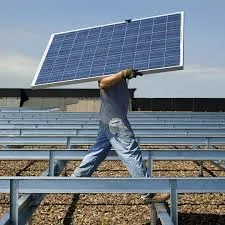Understanding Solar Panel Size and Capacity for Optimal Energy Production
Understanding Solar Panel Capacity and Size
Solar energy has become an increasingly popular alternative to fossil fuels, largely due to its sustainability and numerous environmental benefits. However, many potential users are often puzzled by the concept of solar panel capacity and size. Understanding these two factors is crucial for both residential and commercial solar energy systems, as they directly influence energy production, efficiency, and installation requirements.
What is Solar Panel Capacity?
Solar panel capacity refers to the maximum amount of electricity that a solar panel can produce under ideal conditions, usually measured in watts (W). This capacity indicates how effectively a panel can convert sunlight into usable electricity. While the capacity can vary significantly between different models, most residential solar panels range from 250W to 400W per panel. The higher the wattage, the more electricity the panel can produce, which is particularly important for users looking to meet high energy demands.
Factors Influencing Panel Capacity
Several factors influence the capacity of solar panels, including the efficiency of the photovoltaic (PV) cells, the amount of sunlight available at the installation site, and the angle and orientation of the panels towards the sun. Higher efficiency panels can convert more sunlight into electricity, meaning that fewer panels may be needed to meet energy needs, while lower efficiency panels may require a larger installation area.
The Importance of Size
solar panel capacity and size

When we talk about the size of solar panels, we are typically referring to their physical dimensions, which can range from about 3 feet by 5 feet for standard panels. The size of the panel plays a crucial role in determining how much space is necessary for installation, which can be a limiting factor in urban environments or areas with limited roof space.
Larger solar panels typically have a higher capacity because they can accommodate more solar cells. However, the trade-off is that they require more space, which may not always be available. For instance, a larger solar system might be more productive and require fewer panels, but if space is a constraint, multiple smaller panels might be a more viable solution.
Calculating Energy Needs
To determine the appropriate capacity and size of solar panels for a specific application, users should first assess their energy consumption. This involves reviewing past electricity bills to understand usage patterns and peak demands. Once energy needs are quantified, users can calculate the number of panels required based on the capacity of the selected panels and their total desired output.
For example, if a household consumes 900 kWh per month, users can divide this amount by the expected output of a single panel (considering factors like sunlight hours and efficiency) to determine how many panels will be needed. As a general rule of thumb, you can expect that a 300W panel will produce approximately 1 kWh per day for every day of sunlight, although this may vary based on geographic location.
Conclusion
In summary, solar panel capacity and size play pivotal roles in determining the efficiency and adequacy of a solar energy system. By understanding these concepts, potential solar users can make informed decisions that align their energy needs with the capabilities of available technologies. As solar technology continues to advance, the capacity and size of panels will likely improve, making solar energy an increasingly attractive option for a broader audience. For anyone considering the shift to solar energy, performing due diligence on these parameters is essential for a successful and sustainable investment.
-
Unlocking Energy Freedom with the Off Grid Solar InverterNewsJun.06,2025
-
Unlock More Solar Power with a High-Efficiency Bifacial Solar PanelNewsJun.06,2025
-
Power Your Future with High-Efficiency Monocrystalline Solar PanelsNewsJun.06,2025
-
Next-Gen Solar Power Starts with Micro Solar InvertersNewsJun.06,2025
-
Harnessing Peak Efficiency with the On Grid Solar InverterNewsJun.06,2025
-
Discover Unmatched Efficiency with the Latest String Solar InverterNewsJun.06,2025







